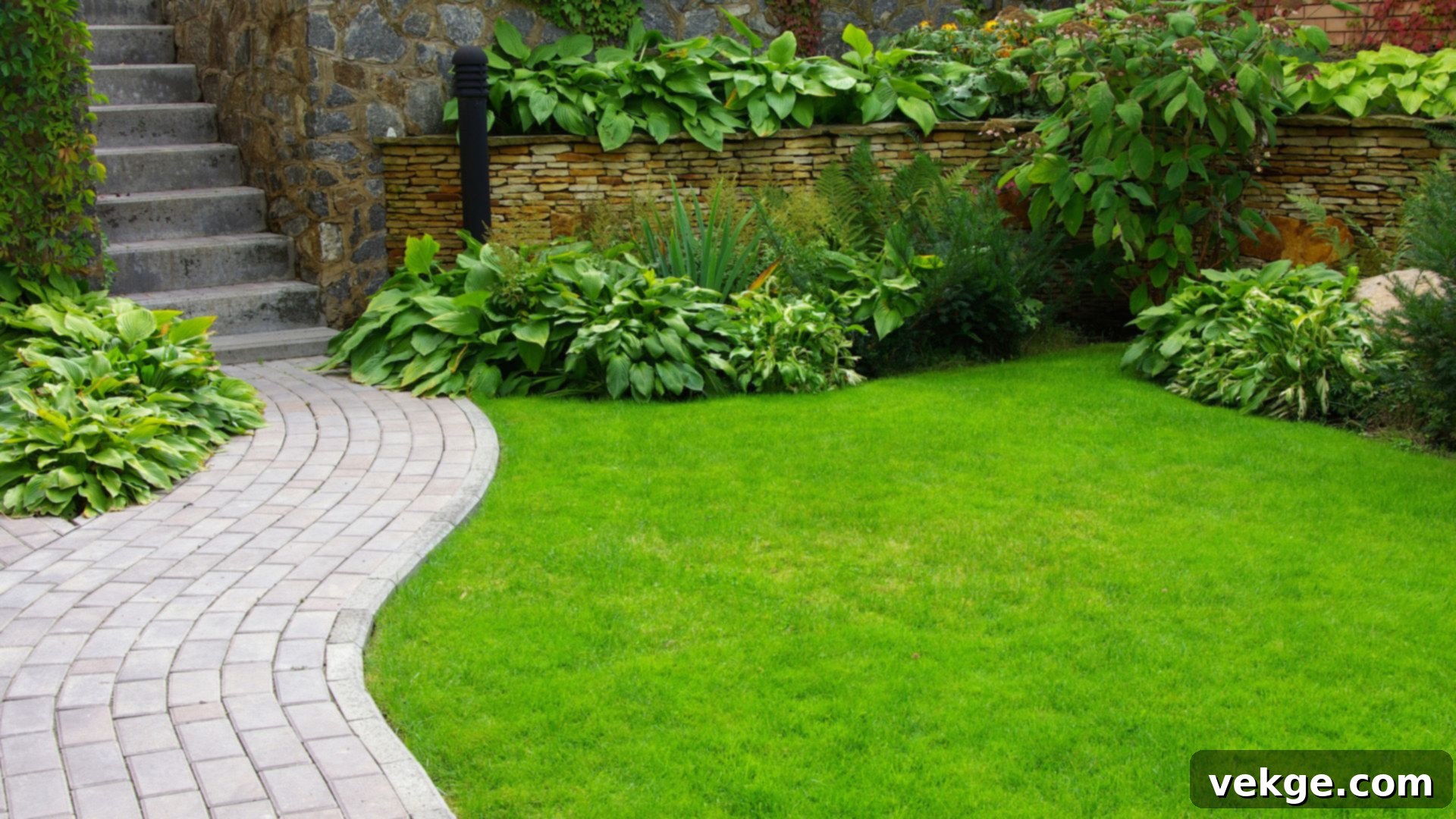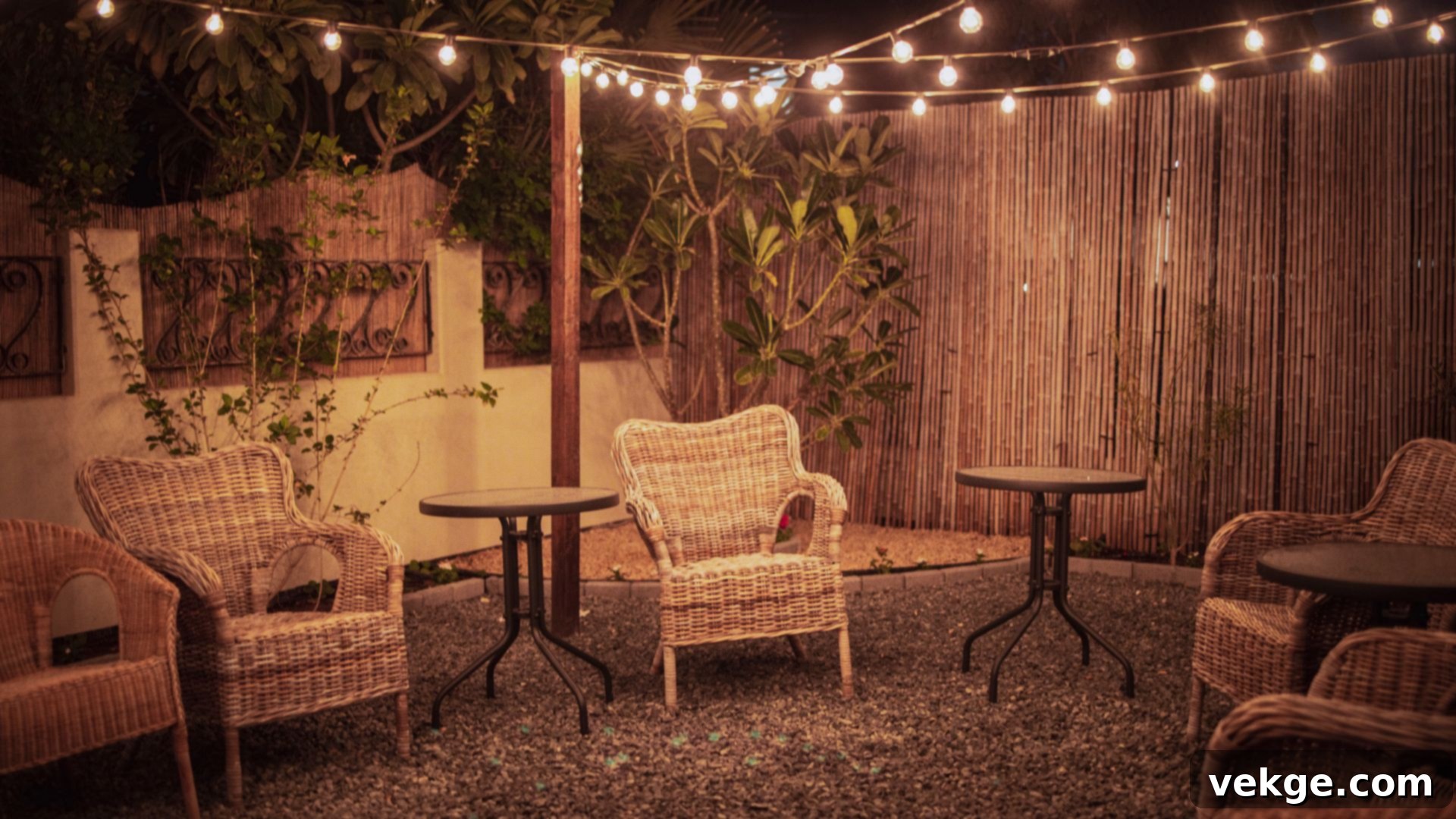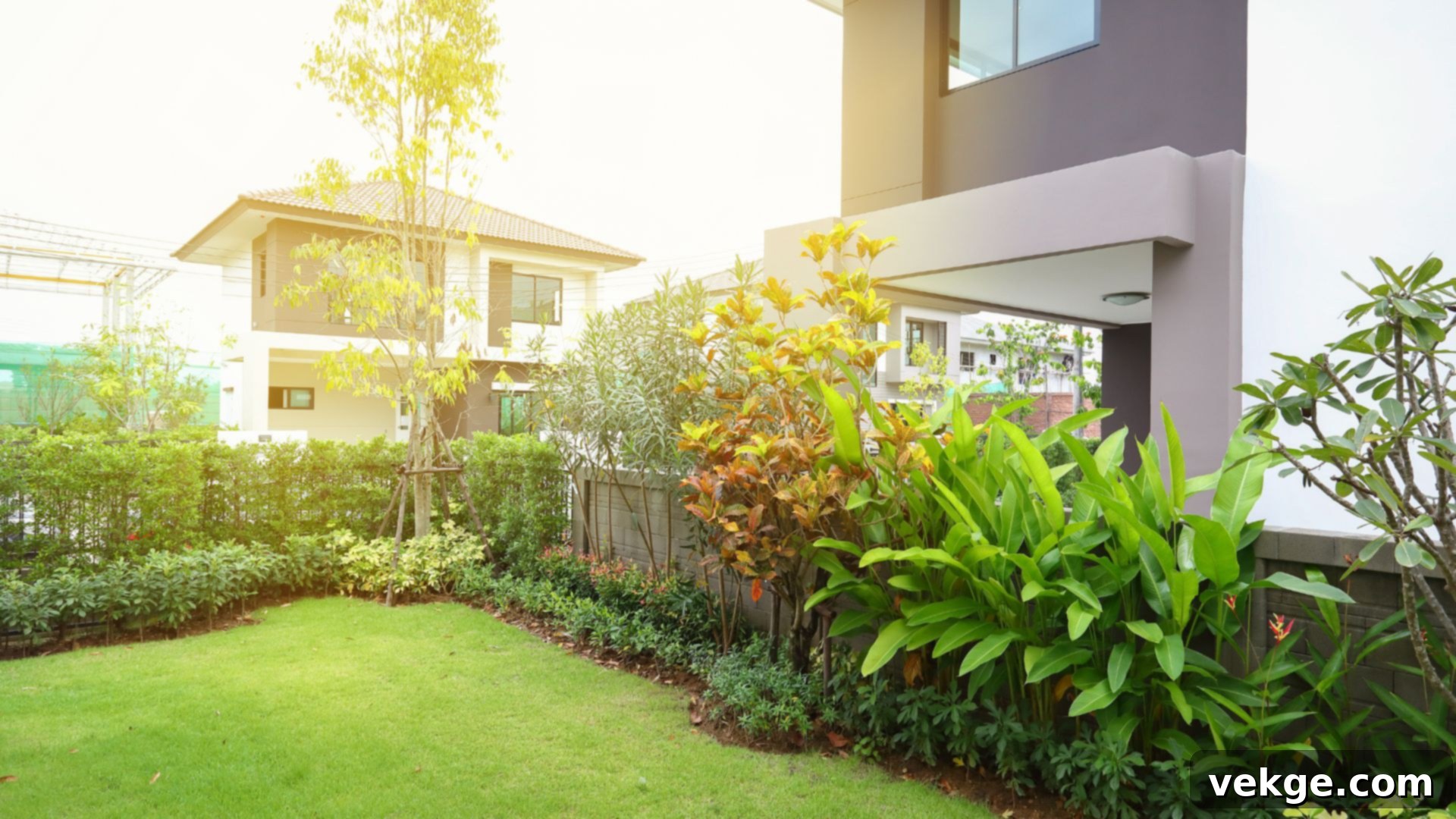Transform Your Outdoor Space: The Ultimate Guide to Preparing Your Garden for Summer
As the days stretch longer and the promise of warmer weather fills the air, there’s an undeniable urge to revitalize our outdoor spaces. Now is the opportune moment to prepare your garden for the vibrant season ahead. A meticulously maintained garden transcends mere visual appeal; it evolves into a true extension of your home – a tranquil sanctuary for relaxation, a lively hub for social gatherings, and a refreshing spot to reconnect with the natural world. Whether you’re working with a compact patio space, a charming balcony, or a sprawling lawn, a few thoughtful updates and strategic enhancements can breathe remarkable new life into your garden, cultivating an inviting environment you’ll cherish all season long.
Embracing a proactive approach to garden preparation not only enhances its beauty but also maximizes its functionality and longevity. From nurturing lush greenery to crafting inviting seating areas, every step contributes to a more enjoyable and sustainable outdoor living experience. This comprehensive guide will walk you through essential steps, creative ideas, and practical tips to ensure your garden flourishes and becomes your favorite summer retreat.
Clear the Canvas: Essential Garden Cleanup and Preparation
Every successful garden project, whether a minor refresh or a major overhaul, begins with a pristine foundation. Think of it as preparing a blank canvas for your summer masterpiece. This crucial first step involves a thorough cleanup that sets the stage for healthy growth and a visually appealing space.
Weeding for Health and Aesthetics
Start by meticulously removing weeds. These unwelcome invaders compete with your cultivated plants for vital nutrients, water, and sunlight, stifling their growth and detracting from your garden’s overall appearance. Employ various weeding methods: manual pulling is effective for smaller areas, ensuring you remove the entire root to prevent regrowth. For larger areas, consider using a hoe or specific weeding tools designed to make the job easier on your back. Organic weed killers, based on natural acids, can be an option for stubborn patches, used judiciously. To minimize future weed growth, consider laying down a weed barrier fabric or applying a generous layer of mulch after clearing. Mulching not only suppresses weeds but also helps retain soil moisture and regulate temperature, providing a healthier environment for your desired plants.
Pruning for Vigour and Shape
Next, turn your attention to pruning overgrown plants, shrubs, and trees. Pruning isn’t just about aesthetics; it’s vital for encouraging healthy new growth, improving air circulation, and maintaining the desired shape and size of your plants. Remove any dead, damaged, or diseased branches to prevent the spread of pathogens and direct the plant’s energy towards productive growth. For flowering shrubs, understand their bloom cycle – prune spring-flowering varieties after they’ve finished blooming, and summer-flowering ones in late winter or early spring. Always use sharp, clean pruning shears, loppers, or saws to make precise cuts, promoting quicker healing and minimizing stress on the plant.
Debris Removal and Surface Revival
Clear away any fallen leaves, twigs, and other debris that may have accumulated over the autumn and winter months. This not only makes your garden look tidier but also removes potential hiding spots for pests and diseases. Bag up organic waste for composting or disposal. For hard surfaces such as patios, pathways, driveways, and decking, a good pressure wash can work wonders. This powerful cleaning method instantly refreshes tired-looking areas, blasting away dirt, grime, moss, and algae, revealing their true colours and texture. It can also significantly improve safety by removing slippery biological growth. Remember to use the correct nozzle and pressure setting for each surface to avoid damage, especially on softer materials like wood decking. This seemingly simple step makes a dramatic difference in the overall cleanliness and brightness of your entire outdoor space.
Nourish and Define: Refreshing Your Lawn and Garden Borders
A lush, healthy lawn and well-defined borders are the hallmarks of a well-cared-for garden. Investing time in these areas will yield significant visual returns and contribute to the overall vitality of your landscape.
Lawn Restoration and Care

If your lawn is looking sparse, patchy, or discolored after the winter, reseeding bare areas is essential to restore its lushness. Begin by preparing the soil in patchy spots, roughing it up and adding a thin layer of topsoil or compost. Choose a grass seed variety suitable for your climate and sun exposure, then sow according to package directions, gently raking it in. Keep newly seeded areas consistently moist until germination. Regular mowing is key to maintaining a healthy lawn, but resist the urge to cut too short. Keeping your mower blades set higher encourages deeper root growth, making the grass more resilient to drought and stress. Aim to remove no more than one-third of the grass blade height at each mowing. Furthermore, consider aerating your lawn to improve air, water, and nutrient penetration to the roots, especially in compacted areas. Fertilizing appropriately with a balanced lawn food tailored for summer growth will provide the necessary nutrients for a vibrant green carpet.
Crisp Borders and Thoughtful Watering
Defining the edges around your flower beds, shrub borders, and pathways gives your garden a polished, professional appearance. Use a spade, edger tool, or even a sharp knife to create clean, crisp lines. For a more permanent solution, consider installing decorative edging materials like brick, stone, metal, or timber. These not only look neat but also help contain mulch and prevent grass from encroaching into planting beds. Finally, don’t overlook the importance of proper watering. During warmer months, plants require consistent moisture. Water deeply and less frequently to encourage strong, deep root systems. Early morning is generally the best time to water, as it minimizes evaporation and allows foliage to dry before nightfall, reducing the risk of fungal diseases. Consider installing a drip irrigation system or soaker hoses for highly efficient and targeted watering, especially in larger beds.
Blossom and Flourish: Colour Up Your Garden With Plants
Summer is synonymous with an explosion of vibrant colours and lush foliage. Introducing the right plants can transform your garden into a lively, fragrant paradise.
Seasonal Blooms for Instant Impact
Embrace the season by introducing cheerful, blooming annuals. Popular choices like petunias, marigolds, impatiens, geraniums, and begonias offer a kaleidoscope of colours and bloom continuously throughout the summer. These are perfect for creating instant cheer in beds, borders, and containers. Don’t shy away from mixing and matching different colours and textures to create dynamic displays. For sustained interest, consider planting perennials such as lavender, coneflowers (Echinacea), hostas, and daylilies. While annuals provide immediate gratification, perennials return year after year, establishing a long-term foundation of beauty and reducing the need for yearly replanting.
Adding Height and Structure with Climbers, Shrubs, and Trees
To add vertical interest and depth to your garden, incorporate climbers and shrubs. Climbing plants like clematis, climbing roses, honeysuckle, or jasmine can adorn trellises, pergolas, or fences, adding a romantic touch and often a delightful fragrance. Shrubs such as hydrangeas, rhododendrons, or spireas provide structure, year-round interest, and can define different areas of your garden. For larger spaces, consider planting small ornamental trees like Japanese maples, dogwoods, or even fruit trees. Trees offer shade, create natural focal points, and contribute to the overall ecological value of your garden, providing habitats for birds and insects.
Container Gardening: Flexibility and Flair
Container gardening is an excellent solution for adding pops of colour and flexibility, especially for smaller spaces like balconies or patios. Plant in a variety of containers, including ceramic pots, terracotta, troughs, and hanging baskets. This allows you to experiment with new layouts, move plants to optimize sun exposure, or bring them indoors during inclement weather. For a stunning display, follow the “thriller, filler, spiller” concept: choose a tall, dramatic plant (thriller) for the center, complement it with mounding plants (filler) around its base, and finish with trailing plants (spiller) that cascade over the edge of the pot. Ensure your containers have adequate drainage holes and use a good quality potting mix designed for container plants.
Design with Purpose: Building Features and Focal Points
Thoughtfully integrated features and focal points can give your garden a sense of purpose, character, and style, drawing the eye and inviting exploration.
Raised Beds for Accessible Gardening
Raised beds are a fantastic addition, especially for growing herbs, vegetables, or even a dedicated flower patch. They offer numerous benefits: improved drainage, better control over soil quality, easier access for planting and harvesting (reducing bending and kneeling), and a neat, organized appearance. They can be constructed from various materials such as wood (cedar, redwood for durability), stone, brick, or galvanized metal. Position them strategically to maximize sunlight for your chosen plants.
Vertical Interest with Trellises and Pergolas
A trellis or pergola not only provides structural support for climbing plants but also adds significant vertical interest and can define outdoor rooms. A trellis against a wall or fence can be adorned with roses or clematis, softening harsh lines. A pergola, with its open roof structure, can create a shaded seating area or an enchanting walkway, draped with wisteria or grapevines. These structures can transform a flat space into a multi-dimensional garden, offering both beauty and functionality.
Warmth and Sound: Fire Pits and Water Features
For cosy evening gatherings, consider installing a fire pit. Available in various styles, from portable metal bowls to elaborate built-in stone structures, a fire pit provides warmth, a mesmerizing focal point, and an ideal setting for storytelling and s’mores. Always prioritize safety with appropriate placement and supervision. Alternatively, a water feature can introduce soothing sounds and reflective surfaces, instantly elevating the tranquility of your garden. Options range from simple bird baths and bubbling fountains to elaborate multi-tiered features or even small ponds. The gentle sound of trickling water can mask urban noise and create a remarkably calming atmosphere.
Renew and Reimagine: Revamp Garden Furniture
Don’t let tired, weathered garden furniture detract from your beautiful summer oasis. A simple DIY project can breathe new life into existing pieces, saving you money and reducing waste.
Spray Painting Garden Chairs: A Creative Transformation
Metal garden chairs, in particular, are prone to becoming faded, chipped, or rusted over time due to exposure to the elements. A simple yet highly transformative project is to revitalize them with spray paint. This method is quick, efficient, and allows for a smooth, even finish. Begin by thoroughly cleaning the chairs to remove any dirt, grime, or loose paint. For metal, a light sanding to rough up the surface and remove any rust will ensure better paint adhesion. Applying a rust-inhibiting primer designed for metal surfaces is a crucial step to prevent future corrosion and ensure your topcoat adheres perfectly.
Once prepped, you can achieve a vast range of finishes using good quality spray paints specifically formulated for outdoor metal surfaces. From bold block colours that make a statement to sleek metallics for a sophisticated touch, or even more decorative effects like crackle, hammered, or marble finishes, the possibilities are endless. Apply paint in several light, even coats rather than one thick coat to prevent drips and ensure a professional finish. After the paint has fully cured, for added durability and weather resistance, seal your chairs with a clear varnish. You can choose gloss for a shiny, contemporary look, semi-gloss for a subtle sheen, or matte for a modern, understated appearance. With a bit of care and creativity, your old chairs can look refreshed, stylish, and ready to complement your updated summer garden setup.
This same principle can be applied to other garden furniture pieces such as metal tables, planters, or even wooden benches (using appropriate primers and paints for wood). A fresh coat of paint can tie together disparate pieces or introduce a new colour scheme, instantly elevating the entire outdoor dining or lounging area.
Illuminate and Enchant: Add Lighting and Ambience

As the sun sets, good lighting completely transforms a garden, extending its usability and creating an enchanting atmosphere. Strategic lighting can define pathways, highlight key features, and set a magical mood for evening entertainment.
Types of Outdoor Lighting
Consider various lighting options to achieve different effects. Solar-powered path lights are an energy-efficient and easy-to-install solution for lining walkways and defining garden beds. Drape fairy lights or string lights along fences, trellises, pergolas, or tree branches for a whimsical and festive glow. These are perfect for creating a celebratory mood. Spotlights can be used to dramatically highlight architectural features, specimen plants, or garden sculptures, adding depth and drama. For more functional areas, such as dining or lounging spaces, consider installing ambient lighting like lanterns, outdoor floor lamps, or integrated deck lighting. Battery-operated candles and traditional lanterns add warmth and intimacy to seating areas, making them ideal for relaxed entertaining or quiet evenings outdoors.
Designing with Light
When planning your lighting scheme, think about functionality and aesthetics. Illuminate high-traffic areas for safety, such as steps and paths. Use softer, warmer lights for seating areas to create a welcoming and intimate ambiance. Experiment with different light temperatures – warm white lights create a cosy, inviting feel, while cooler tones can provide a more modern, crisp look. Look for energy-efficient options, such as LED lights, and weather-resistant fixtures that can withstand the elements. Incorporating timers or smart lighting systems allows for effortless control and further energy savings. The right lighting can make your garden just as inviting and functional after dark as it is during the day.
Embrace Nature: Wildlife-Friendly Touches
A thriving garden is not just for human enjoyment; it’s also a vital haven for local wildlife. By making a few mindful choices, you can significantly boost your garden’s ecological value and invite fascinating creatures into your outdoor space.
Plants for Pollinators
Choose plants that are known to attract bees, butterflies, and other beneficial pollinators. Lavender, echinacea (coneflower), borage, calendula, sunflowers, and various native wildflowers are excellent choices. These plants provide essential nectar and pollen, supporting the crucial work of pollinators which are vital for our ecosystem. Grouping pollinator-friendly plants together makes it easier for insects to find them and forage efficiently. Avoid using chemical pesticides that can harm these beneficial insects.
Water and Shelter for Wildlife
Install bird feeders to provide a food source, especially during lean times, and birdbaths to offer a crucial water source for drinking and bathing. A shallow dish with stones can also serve as a safe water spot for bees and other insects. Consider adding insect hotels or bug houses, which provide shelter for solitary bees, ladybugs, and other beneficial bugs that help control garden pests naturally. Even leaving a small wild patch of your garden to grow naturally, with minimal intervention, can offer invaluable food and shelter for many species, from small mammals to diverse insects. Log piles and compost heaps also provide excellent microhabitats for a variety of creatures, enhancing the biodiversity of your garden.
Smart Gardening: Low-Maintenance Garden Hacks
For those with limited time, energy, or simply a desire for a fuss-free garden, incorporating low-maintenance solutions is key. You can still enjoy a beautiful outdoor space without constant upkeep.
Effortless Greenery and Water-Wise Choices
If consistent lawn care feels like a chore, artificial grass offers a perpetually neat, green look with zero mowing, watering, or fertilizing required. It’s a significant upfront investment but saves immense time and resources in the long run. For planting, opt for drought-tolerant plants, also known as xeriscape plants. Sedum, lavender, succulents, ornamental grasses, rosemary, and many Mediterranean herbs thrive with minimal watering once established, making them perfect for reducing your water bill and gardening effort. Grouping plants with similar water needs together also makes watering more efficient.
Automated Watering and Weed Suppression
Investing in smart watering solutions can drastically reduce daily upkeep. Drip irrigation systems deliver water directly to the plant roots, minimizing waste and ensuring plants receive consistent moisture. Self-watering pots and planters have built-in reservoirs that feed water to plants over several days, ideal for busy individuals or when going on holiday. Rain barrels are another excellent option for collecting rainwater, providing a sustainable and free water source for your garden. Additionally, applying a thick layer of organic mulch (such as wood chips, bark, or straw) around your plants is a simple yet effective hack. Mulch suppresses weed growth, retains soil moisture, and moderates soil temperature, all of which contribute to a healthier garden with less manual intervention.
By implementing these smart strategies, you can design a garden that remains beautiful and vibrant with significantly less effort, allowing you more time to simply enjoy your outdoor haven.
Conclusion: Your Summer Garden Awaits
Preparing your garden for summer is a rewarding process that transforms your outdoor space into a cherished extension of your home. From the initial cleanup and meticulous lawn care to the vibrant addition of seasonal plants and the strategic placement of inviting features, each step contributes to creating an environment that is both beautiful and functional. Revitalizing tired furniture, illuminating pathways with enchanting lights, and inviting local wildlife further enrich the experience, fostering a truly holistic connection with nature.
Whether you’re aiming for a lavish transformation or a series of simple, impactful updates, the key is to approach your garden with intention and enthusiasm. Embrace these tips and ideas to cultivate an outdoor oasis where you can relax, entertain, and find solace throughout the warmer months. Your summer garden is not just a project; it’s an investment in your lifestyle, offering endless opportunities for joy, peace, and memorable moments. Start your garden transformation today, and prepare to enjoy a truly spectacular summer outdoors!
